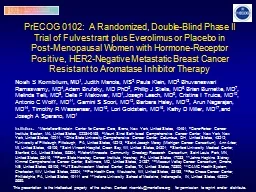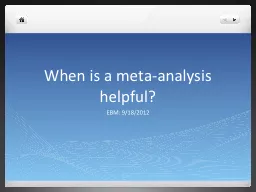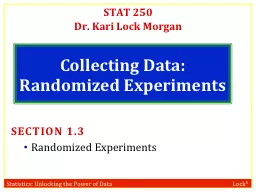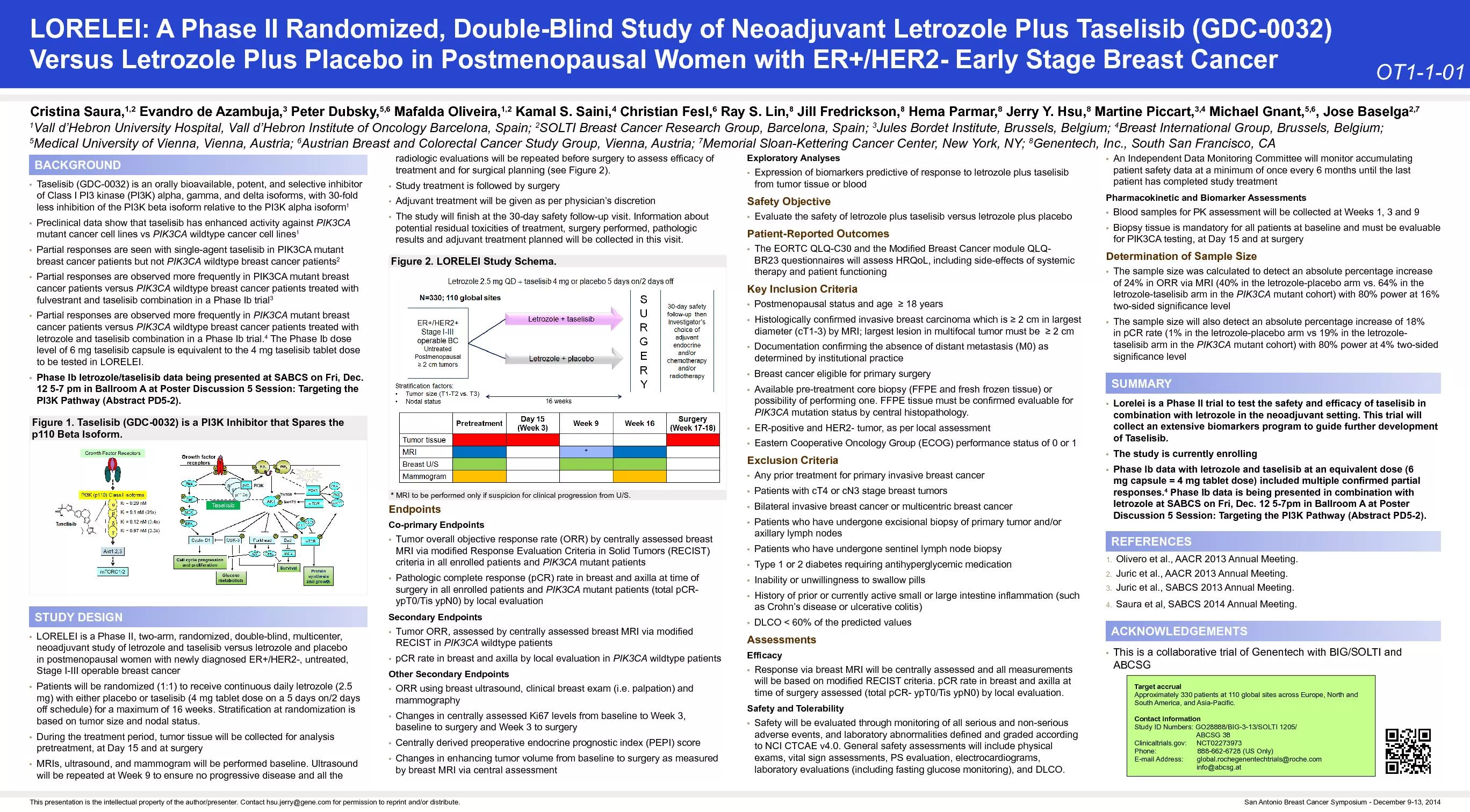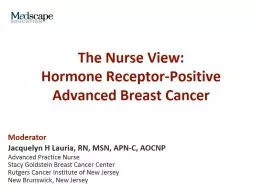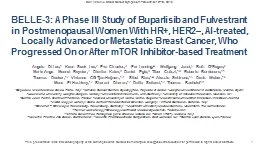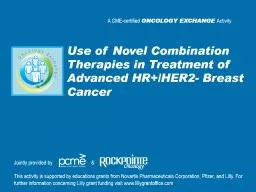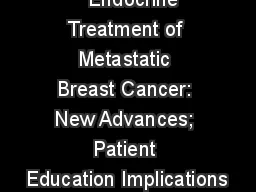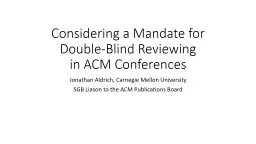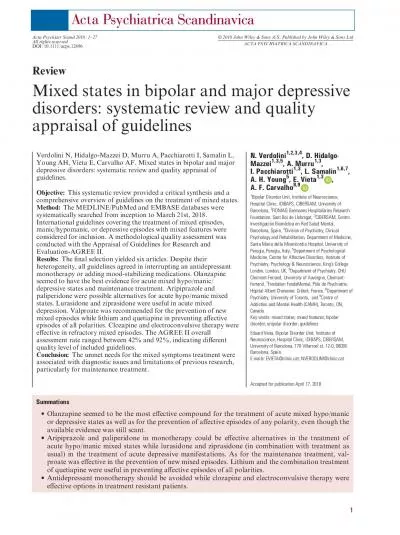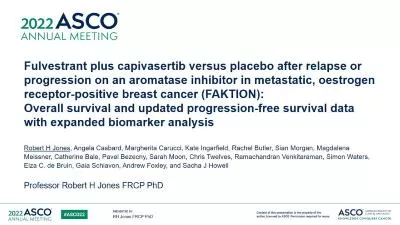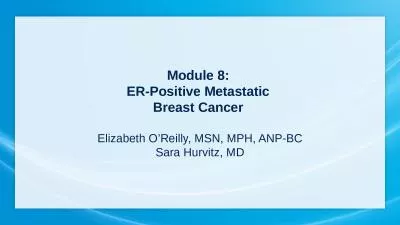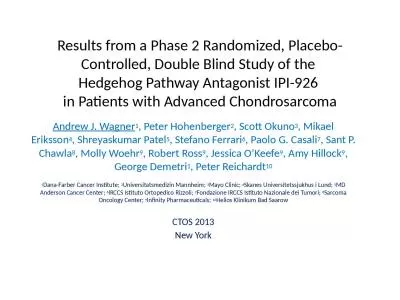PPT-PrECOG 0102: A Randomized, Double-Blind Phase II Trial of Fulvestrant plus Everolimus
Author : tawny-fly | Published Date : 2020-04-04
PostMenopausal Women with HormoneReceptor Positive HER2Negative Metastatic Breast Cancer Resistant to Aromatase Inhibitor Therapy Noah S Kornblum MD 1 Judith
Presentation Embed Code
Download Presentation
Download Presentation The PPT/PDF document " PrECOG 0102: A Randomized, Double-Bli..." is the property of its rightful owner. Permission is granted to download and print the materials on this website for personal, non-commercial use only, and to display it on your personal computer provided you do not modify the materials and that you retain all copyright notices contained in the materials. By downloading content from our website, you accept the terms of this agreement.
PrECOG 0102: A Randomized, Double-Blind Phase II Trial of Fulvestrant plus Everolimus: Transcript
PostMenopausal Women with HormoneReceptor Positive HER2Negative Metastatic Breast Cancer Resistant to Aromatase Inhibitor Therapy Noah S Kornblum MD 1 Judith Manola MS 2 Paula . 978 978 915 915 978 Input Torque Capacity lbft 14502050 2250 14501650 14501650 14501650 14501650 15501750 1650 15501750 15501750 Engine Coupling Dry Clutch Dry Clutch Dry Clutch Dry Clutch Dry Clutch Dry Clutch Dry Clutch Dry Clutch Dry Clutch Dry C EBM: 9/18/2012. Evidence-based medicine. 25 year old woman presents with an acute migraine. She doesn’t respond to subcutaneous sumatriptan, intravenous metoclopramide, diphenhydramine, or ketorolac. . Dr. Kari Lock Morgan. Collecting Data: Randomized Experiments. SECTION 1.3. . Randomized Experiments. Exercise and the Brain. A study found that elderly people who walked at least a mile a day had significantly higher brain volume (gray matter related to reasoning) and significantly lower rates of Alzheimer’s and dementia compared to those who walked less. Versus Letrozole Plus Placebo in Postmenopausal Women with ER+/HER2- Early Stage Breast Cancer Cristina Saura, 1,2 Evandro de Azambuja, 3 Peter Dubsky, 5,6 Mafalda Oliveira, 1,2 Kamal S. Saini, 4 HR Advanced Breast Cancer. Introduction. Restaging at Relapse vs De Novo Metastatic Disease. Visceral Crisis. Personalizing Endocrine Therapy. Endocrine Therapy Landscape. FIRST Trial. Fulvestrant vs Anastrozole. Buparlisib. and . Fulvestrant. in Postmenopausal Women With HR , HER2–, AI-treated, . Locally Advanced or Metastatic Breast Cancer, Who Progressed On or After . mTOR. Inhibitor-based Treatment. Deconvolution. A.J. Bell and T.J. . Sejnowski. Computational Modeling of Intelligence. 11.03.11.(Fri). Summarized by . Joon. . Shik. Kim. Abstract. Self-organizing learning algorithm that maximizes the information transferred in a network of nonlinear units.. Jointly provided by & This activity is supported by educations grants from Novartis Pharmaceuticals Corporation, Pfizer, and Lilly. For further information concerning Lilly grant funding visit www.lillygrantoffice.com An Interactive Oncology Grand Rounds Series. Joyce O’Shaughnessy, MD. Chair, Breast Cancer Research Program. Baylor Charles A Sammons Cancer Center. Celebrating Women Chair in Breast Cancer Research. in ACM Conferences. Jonathan Aldrich, Carnegie Mellon University. SGB . Liason. to the ACM Publications Board. Double-Blind Reviewing (DBR) shields author identities from reviewers. Single-Blind Reviewing (SBR). Review disorders:systematicreviewandquality appraisalofguidelines VerdoliniN,Hidalgo-MazzeiD,MurruA,PacchiarottiI,SamalinL, YoungAH,VietaE,CarvalhoAF.Mixedstatesinbipolarandmajor depressivedisorders:s Overall survival and updated progression-free survival data with expanded biomarker analysis. What are the new FAKTION data?. FAKTION: background. FAKTION: trial design. FAKTION: primary . r. esults reported in 2020. Breast Cancer . Elizabeth O’Reilly, MSN, MPH, ANP-BC. Sara . Hurvitz. , MD. Disclosures for . Ms. O’Reilly. No financial interests or affiliations to disclose. Disclosures for Dr . Hurvitz. Salary: . Hedgehog Pathway Antagonist IPI-926 . in Patients with Advanced Chondrosarcoma. Andrew J. Wagner. 1. , Peter Hohenberger. 2. , Scott Okuno. 3. , . Mikael. . Eriksson. 4. , Shreyaskumar Patel. 5. , Stefano Ferrari.
Download Document
Here is the link to download the presentation.
" PrECOG 0102: A Randomized, Double-Blind Phase II Trial of Fulvestrant plus Everolimus"The content belongs to its owner. You may download and print it for personal use, without modification, and keep all copyright notices. By downloading, you agree to these terms.
Related Documents

